115. The ultimate proof is out
there to see
for yourself. But insight requires an internalized map - based
on the
outside world.
How can one convince someone who does not
possess such a corresponding map? And coversely, how can I be sure
that I have aquired the map described by others?
For one thing, we must share a
common view not only of the outside world but also of our inside
cosmos.
The rongorongo texts offers
possibilities - together with another ingredient, viz. the view of the sky at night. We can
try to put this pair of aspects side by side in order to deepen our
perceptions.
For instance should the peculiar path of Mars be fully explored.
So far we have looked at a few places from November 6 (310) and ahead.
We should now try to go in the opposite direction in order to see where
Mars would have been visible in the evening of for instance October
7 AD 2022 (although
the map above does not represent this year).
However, enlightened by a TV-program yesterday evening I will
first propose a fundamental structural feature used in the classical
cosmos:
In the program was discussed if Irish people could have visited
North America around 500 AD. Otherwise it would be hard to
account for the little sun observatory constructed by stone slabs
and found in Connecticut. The architecture was identical with what
could be expected from Irish visitors around that time. No other
known culture had something similar.
In a way the observatory in Connecticut resembled - I thought -
the very old Mnajdra solar observatory:
Here the rays from the Sun were used to display a pair of
crucial times in the year.
... Then I become aware of ... a presence
- a faint, ghostly glimmering, like moonglow, that has
appeared on the solstice stone. I don't know how long it
lasts, a second or two only I would guess, but while it is
there it seems less like a projection - which I know it to
be - than something immanent within the stone itself. And it
seems to function as a herald for it fades almost as soon as
it has appeared and in its place the full effect snaps on -
instantaneously. It wasn't there, and then it's there. As
Chris had described, the effect does curiously resemble a
poleaxe, or a flag on a pole, and consists of a 'shaft',
narrow at the base but widening a little towards the top,
running up the left hand side of the solstice stone,
surmounted by a right-facing 'head' or 'flag'. An instant
later an almond-shaped spot of light, like an
eye, appears a few centimeters to the
right of the 'flag' and the effect is complete. Weirdly - I
do not claim it has any significance - this flag-on-a-pole
symbol is the ancient Egyptian hieroglyph
neter, meaning
'god', or 'a god' - and not to be understood at all in the
Judaeo-Christian usage of that word but rather as a
reference to one of the supernatural powers or principles
that guide and balance the universe. Manifested here, in
this strange Stone Age temple, it glows, as though lit by
inner fire.'
But in fundamental contrast to the Mnajdra temple the
Connecticut structure was catching the rays from the sun
at winter solstice and the sun at spring equinox (instead of
summer solstice).
I guess this idea had become current because precession had
forced a gradual extension (Mebsuta) of the ancient map.

Eventually this extension would
lead to a change from summer solstice to spring equinox. → 27 =
¼ * 108 → day 365 + 108 + 27 = 500
(May 15).
... The worship of
the Divine Child was established in Minoan Crete, its
most famous early home in Europe. In 1903, on the site of
the temple of Dictaean Zeues - the Zeus who was yearly born
in Rhea's cave at Dicte near Cnossos, where Pythagoras spent
'thrice nine hallowed days' of his initiation - was found a
Greek hymn which seems to preserve the original Minoan
formula in which the gypsum-powdered, sword-dancing Curetes,
or tutors, saluted the Child at his birthday feast. In it he
is hailed as 'the Cronian one' who comes yearly to Dicte
mounted on a sow and escorted by a spirit-throng, and begged
for peace and plenty as a reward for their joyful leaps
...
The year had to be stretched out so
as to cover the terrain the precession had added, and
evidently this extension should eventually measure a quarter. → 365 + 91 = 456 →
64 + 27 = 91.
... 'From the time I was in your womb,' Maui went on,
'I have known the names of these children of yours. Listen,'
he said as he pointed to his brothers in turn. 'You are
Maui mua, you are Maui roto, you are Maui taha,
and you are Maui pae. And as for me, I am Maui
potiki, Maui-the-last-born. And here I am.' When
he had finished, Taranga had to wipe her eyes because
there were tears in them, and she said: 'You are indeed my
lastborn son. You are the child of my old age. When I had
you, no one knew, and what you have been saying is the
truth. Well, as you were formed out of my topknot you can be
Maui tikitiki a Taranga.'
So that became his name, meaning Maui-formed-in-the-topknot-of-Taranga.
And this is very strange, because women in those days did
not
have topknots. The topknot was the
most sacred part of a person, and only men had them ...

A quarter of the precessional
cycle = 26000 / 4 = 6500 years.
At winter solstice the rays from the Sun entered through one
opening (vaha) in
the Irish stone observatory and a quarter later, at spring equinox, the perception
was that the rays from the Sun were reaching ínto the structure by way of another
window in the east → Easter →
Easter Island.

To my mind comes the idea that there were twins ('gnomes') born
at the winter solstice.
A pair of (y)ears - misseri - were needed because the
cycle of the Sun measured 2 π
times the radius (the rays).
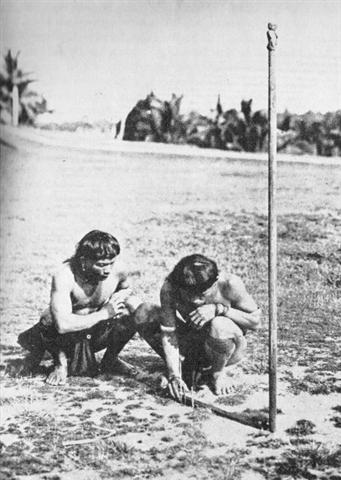
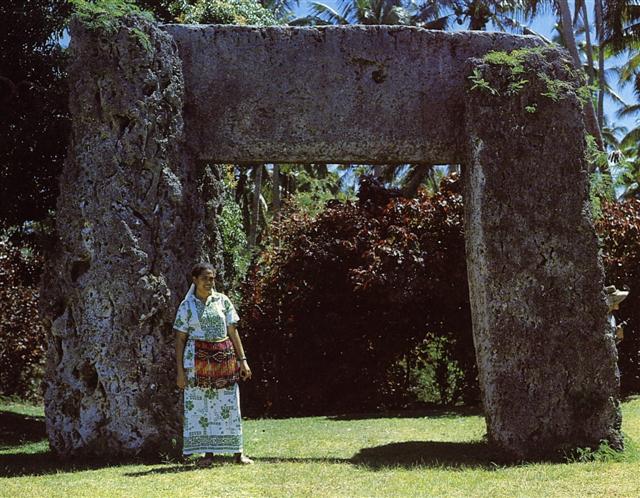
... In north Asia the common mode of
reckoning is in half-year, which are not to be regarded as
such but form each one separately the highest unit of time:
our informants term them 'winter year' and 'summer year'.
Among the Tunguses the former comprises 6½ months, the
latter 5, but the year is said to have 13 months; in
Kamchatka each contains six months, the winter year
beginning in November, the summer year in May; the Gilyaks
on the other hand give five months to summer and seven to
winter. The Yeneseisk Ostiaks reckon and name only the seven
winter months, and not the summer months. This mode of
reckoning seems to be a peculiarity of the far north: the
Icelanders reckoned in misseri, half-years, not in
whole years, and the rune-staves divide the year into a
summer and a winter half, beginning on April 14 and October
14 respectively. But in Germany too, when it was desired to
denote the whole year, the combined phrase 'winter and
summer' was employed, or else equivalent concrete
expressions such as 'in bareness and in leaf', 'in straw and
in grass' ...
... The tradition preserved by Hyginus in
his Poetic Astronomy that the constellation Capricorn
('He-goat') was Zeus's foster-brother
Aegipan, the Kid of the
Goat Amalthea whose horn Zeus also placed among the stars,
shows that Zeus was born at mid-winter when the Sun entered
the house of Capricorn ...
80 + 328 (Nashira) = 408, and
328 - 84 = 244 = 164 (Heavenly Gate) + 80:
|
BABYLONIAN
ECLIPTIC CONSTELLATIONS: |
|
26 |
Mahar sha hi-na Shahū |
Western One in the Tail of the Goat |
γ
(Nashira)
Capricorni |
328.0 |
Febr 12 (408) |
|
27 |
Arkat sha hi-na Shahū |
Eastern One in the Tail of the Goat |
δ
(Deneb Algiedi)
Capricorni |
329.8 |
Febr
13 |
|
... As a lunar station these stars were the
Sogdian Sarwa and the Khorasmian
Shushak, the Leader; the Persian Hucru,
the Good Goer; and the Coptic Khambalia,
[also the name of the star
λ]
Crooked-clawed,
λ
being substituted for
φ;
and it is said that they were the Akkadian Lu
Lim the He Goat, Gazelle, or Stag, the
original perhaps meaning 'King' and employed for
δ.
ι
alone, according to Hommel, was the Death Star,
Mulu Bat ...
... On Euphrates it was Lu Lim, the
Gazelle, Goat, or Stag, - or perhaps King; and,
with
ε,
probably Mas-tab-ba, another of the seven
pairs of Twin-stars of that country. The Hindus
called it Āpa, or Āpas, the
Waters; and the Chinese, Tsze Seang, the
Second Minister of State ... |
|
0 |
1-iku |
Field measure |
τ
(Anunitum)
Piscium |
16.5 |
April 6 (461, 96) |
| |
|
1 |
Mahrū-sha-rishu-ku |
Front of the Head of Ku |
β
(Sheratan),
γ (Mesarthim) Arietis |
27.4 |
April 17 (472, 107) |
|
2 |
Arku-sha-rishu-ku |
Back
of the Head of Ku |
α
(Hamal)
Arietis |
30.5 |
April 20 (110) |
| |
|
3 |
Temennu |
Foundation Stone |
η
(Alcyone)
Tauri |
56.1 |
May
16 (136) |
|
4 |
Pidnu-sha-Shame |
Furrow of Heaven |
α
(Aldebaran)
Tauri |
68.2 |
May
28 (148) |
|
5 |
Shur-narkabti-sha-iltanu |
Star
in the Bull towards the north |
β
(El Nath)
Tauri |
80.9 |
June
9 (160) |
|
6 |
Shur-narkabti-sha-shūtū |
Star
in the Bull towards the south |
ζ
(Heavenly Gate)
Tauri |
84.0 |
June 13 (164) |
| |
|
7 |
Maru-sha-pu-u-mash-mashu |
Front of the Mouth of the Twins |
η
(Tejat Prior)
Gemini |
93.4 |
June
22 (173) |
|
8 |
Arkū-sha-pu-u-mash-mashu |
Back
of the Mouth of the Twins |
μ
(Tejat Posterior)
Gemini |
95.4 |
June
24 (175) |
|
9 |
Mash-mashu-sha-Risū |
Twins of the Shepherd (?) |
γ
(Alhena)
Gemini |
103.8 |
July
2 (183) |
|
10 |
Mash-mashu-Mahrū |
Western One of the Twins |
α
(Castor)
Gemini |
113.4 |
July
12 (193) |
| |
|
11 |
Mash-mashu-arkū |
Eastern One of the Twins |
β
(Pollux)
Gemini |
116.2 |
July
15 (196) |
|
12 |
Arkū-sha-nangaru-sha-shūtu |
Southeast Star in the Crab |
δ
(Ascellus Australis)
Cancri |
131.4 |
July
30 (211) |
|
13 |
Rishu A. |
Head
of the Lion |
ε
(Ras Elaset Australis)
Leonis |
146.6 |
Aug
14 (226) |
|
14 |
Sharru |
King |
α
(Regulus)
Leonis |
152.7 |
Aug
20 (232) |
|
15 |
Maru-sha-arkat-Sharru |
4th
Son behind the King |
ρ
(Shir)
Leonis |
158.9 |
Aug
26 (238) |
|
16 |
Zibbat A. |
Tail
of the Lion |
β
(Denebola)
Leonis |
178.3 |
Sept
15 (258) |
|
17 |
Shēpu-arkū sha-A |
Hind
Leg of the Lion |
β
(Alaraph)
Virginis |
178.6 |
Sept
15 (258) |
|
18 |
Shur-mahrū-shirū |
Front or West Shur (?) |
γ
(Porrima)
Virginis |
191.5 |
Sept
28 (271) |
|
... The
Latins called this Porrima, or
Antevorta, sometimes Postvorta, names
of two ancient goddesses of prophecy, sisters
and assistants of Carmenta or Carmentis,
worshiped and at times invoked by their women.
Porrima was known as Prorsa and Prosa
by Aulus Gellius of our 2d century. γ
was specially mentioned by Kazwini as itself
being Zāwiat al 'Awwā', the Angle, or
Corner, of the Barker; and Al Tizini, with Ulug
Beg, had much the same name for it; but Al
Bīrūnī, qouting from Al Zajjāj, said 'these
people are all wrong', and that 'Awwā' here
meant 'Turn', referring to the turn, or bend, in
the line of stars ...
... There is,
however, a remarkable variant where it is said
that he [Kullervo in Kalevala] was 'sent
to Esthonia to bark under the fence;
he barked one year,
another one, a little from the third; three
years he barked at the smith of his uncle, at
the wife (or servant) of the smith as his
daughter-in-law' ... |
|
19 |
Sa-Sha-Shirū |
Virgin's Girdle |
α
(Spica)
Virginis |
202.7 |
Oct
9 (282) |
... The verdicts concerning the
familiarity of ancient Near Eastern astronomers with the
Precession depend, indeed, on arbitrary factors; namely, on
the different scholarly opinions about the difficulty of the
task. Ernst Dittrich, for instance, remarked that one should
not expect much astronomical knowledge from Mesopotamia
around 2000 B.C. 'Probably they knew only superficially the
geometry of the motions of sun and moon. Thus, if we examine
the simple, easily observable motions by means of which one
could work out chronological determinants with very little
mathematical knowledge, we find only the Precession.'
There was also a learned Italian Church
dignitary, Domenico Testa, who snatched at this curious
argument to prove that the world had been created ex nihilo,
as described in the first book of Moses, an event that
supposedly happened around 4000 B.C. If the Egyptians had
had a background of many millennia to reckon with, who, he
asked, could have been unaware of the Precession? 'The very
sweepers of their observatories would have known.'
...
.jpg)
 |
 |
 |
 |
 |
|
Gb2-6 (9 * 29) |
Gb2-7 |
Gb2-8 |
Gb2-9 (35) |
Gb2-10 (265) |
|
PLACE OF THE SUN |
BUNDA (Foundation)
/ KAKKAB
NAMMAΧ (Star of Mighty Destiny)
... β and ξ also
constituted the Persian lunar station Bunda
and the similar Coptic Upuineuti, the
Foundation; but β alone marked the sieu Heu,
Hiu, or Hü, Void, anciently Ko,
the central one of the seven sieu which, taken
together, were known as Heung Wu, the
Black Warrior, in the northern quarter of the
sky. It is found in Hindu lists as Kalpeny,
of unknown signification. On the Euphrates it
was Kakkab Nammaχ, the Star of Mighty
Destiny, that may have given origin to the title
of the manzil [Al Sa'd al Su'ud], as well
as to the astrologers' name for it - Fortuna
Fortunarum. Al Firuzabadi of Khorasan,
editor of Al Kāmūs, the great Arabic
dictionary of the 14th century, called some of
the smaller stars below this Al Au'ā, the
plural of Nau', a Star, but without
explanation, and they certainly are
inconspicious ...
|
|
Al Sa'd al Su'ud-22 (Luckiest of the Lucky)
/
Emptiness-11 (Rat)
TSIN = 36 Capricorni
(325.2),
ALPHIRK (The Flock) =
β
Cephei
(325.7),
SADALSUD =
β
Aquarii,
ξ
Gruis (325.9)
March
14 AD 2024 (Π) MARS |
No star listed (326) |
CASTRA =
ε
Capricorni
(327.2),
BUNDA (Foundation) =
ξ
Aquarii
(327.5)
SIRIUS (α Canis Majoris |
Mahar sha hi-na
Shahū-26 (Western One in the Tail of the Goat)
NASHIRA
(Fortunate One) =
γ
Capricorni
(328.0),
ν
Oct. (328.3),
AZELFAFAGE (Tail of the Hen) =
π¹
Cygni,
κ
Capricorni (328.7) |
Arkat sha hi-na
Shahū-27 (Eastern One in the Tail of the Goat)
ENIF (The Nose) =
ε
Pegasi, ERAKIS =
μ
Cephei
(329.2),
46 CAPRICORNI, JIH (the Sun) =
κ
Pegasi
(329.3),
ι Piscis Austrini (329.4),
λ
Capricorni
(329.6),
ν
Cephei (329.7),
DENEB
ALGIEDI
=
δ
Capricorni
(329.8)
*288.0 = *329.4 - *41.4 |
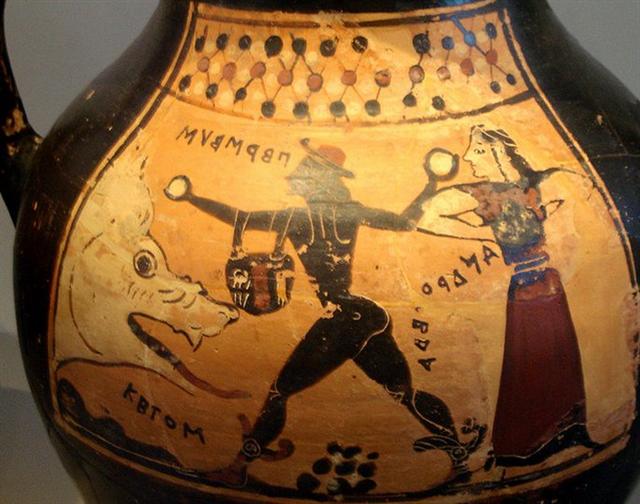 |
|
Febr 9 (40) |
10 |
11 |
12 (408) |
13 (345 + 64) |
|
°Febr 5 (36) |
6 |
7 |
8 (*324) |
9 (40) |
|
'Jan 13 (378) |
14 |
15 (*300) |
16 |
17 |
|
"Dec 30 (364) |
31 |
"Jan 1 |
2 |
3
(368, *288) |
|
DEC 7 (11 * 31 =
341) |
8 |
9 |
10 |
11 (345) |
|
THE NAKSHATRA
VIEW: |
|
Al Tarf-7 (The End)
ψ
Velorum (143.3),
ALTERF =
λ
Leonis,
τ²
Hydrae (143.4),
ξ
Leonis (143.5)
*102.0 = *143.4 - *41.4 |
A
Hydrae
(144.1)
VEGA (α Lyrae) |
Creation of our present world
UKDAH (Knot) =
ι
Hydrae (145.4),
κ
Hydrae (145.5),
SUBRA =
ο
Leonis
(145.8)
ALPHEKKA MERIDIANA
*104.0 = *145.4 - *41.4 |
5 Imix 9 Kumk'u
Rishu A.-13 (Head of
the Lion)
ψ
Leonis (146.4),
RAS
ELASET AUSTRALIS = ε Leonis
(146.6)
*105.0 = *146.4 - *41.4 |
VATHORZ PRIOR = υ Carinae
(147.9) |
|
UKDAH (THE KNOT)
... σ,
4.6, was Ulug Beg's
Al Minhar al
Shujā', the Snake's Nose. τ¹,
4.9, flushed white, and τ²,
4.6, lilac, with ι and the
5th magnitude A, form the curve in the neck,
Ptolemy's Καμπή; but
Kazwini knew them as Ukdah, the Knot ... |
|
Aug 11 |
12 |
13 (225) |
14 |
15 (227) |
|
"July 1 |
2 |
3 (*104) |
4 |
5 |
|
JUNE 8 |
9 |
10 (161) |
11 |
12 |
 |
 |
 |
 |
 |
|
Ga3-20 → Dramasa |
Ga3-21 |
Ga3-22 |
Ga3-23 |
Ga3-24 |

... Midsummer is the flowering
season of the oak, which is the tree of endurance
and triumph, and like the ash is said to 'court the
lightning flash'. Its roots are believed to extend
as deep underground as its branches rise in the air
- Virgil mentions this - which makes it emblematic
of a god whose law runs both in Heaven and in the
Underworld ... The month, which takes its name from
Juppiter the oak-god, begins on June 10th and
ends of July 7th. Midway comes St. John's Day, June
24th, the day on which the oak-king was
sacrificially burned alive. The Celtic year was
divided into two halves with the second half
beginning in July, apparently after a seven-day
wake, or funeral feast, in the oak-king's honour ...
 |
|
*118 |
APRIL 8 |
9 |
10 (100, 465) |
11 (*21) |
 |
 |
 |
 |
|
365 + 18 = 265 + 118 |
Gb6-2 (13
* 29½ + ½ = 384) |
Gb6-3
(385 = 465 - 80) |
Gb6-4 (229 + 157) |
 |
 |
 |
 |
|
Ga1-18 → 118 = 241 - 123 |
Ga1-19 →
384 - 365 |
Ga1-20 |
Ga1-21 →
101 + 20 |
|
KHUFU
MINTAKA
(Belt) = δ Orionis,
υ Orionis (82.4),
χ Aurigae (82.5), ε Columbae (82.6)
*41.0 = *82.4 - *41.4
→ 41 Arietis (Bharani) |
KHAFRE
Al Hak'ah-3 (White Spot)
/
Mrigashīrsha-5 (Stag's Head)
/
Turtle Head-20
(Monkey)
/
Mas-tab-ba-tur-tur
(Little Twins)
NEBULA = M1 Tauri (83.0),
φ¹
Orionis (83.1),
HEKA (KAKKAB SAR, the Constellation
of the King), λ Orionis, ORION NEBULA = M42
(83.2),
φ²
Orionis (83.6),
ALNILAM (String of Pearls) =
ε
Orionis
(83.7) |
MENKAURE
Three Stars-21
(Gibbon)
/
Shur-narkabti-sha-shūtū-6 (Star in the Bull
towards the south)
/
ANA-IVA-9 (Pillar of exit)
HEAVENLY GATE = ζ Tauri, ν
Columbae (84.0),
ω
Orionis (84.2),
ALNITAK (Girdle) =
ζ Orionis,
PHAKT (Phaet) =
α
Columbae
(84.7) |
ο Aurigae (85.8), γ Leporis (85.9)
YANG MUN (α Lupi) |
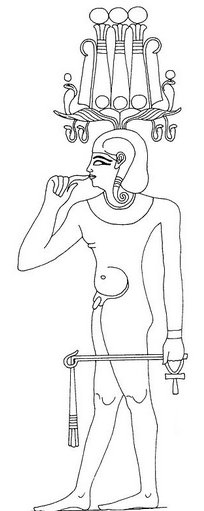 |
|
June 11 (162) |
12 (*448) |
13 (*84) |
14 (530) |
|
°June 7 |
8 (*444) |
9 (*80) |
10 (161) |
|
'May 15
(500 = 365 + 135) |
16 (136.
*56) |
17 (*422) |
18 (*58) |
|
"May 1
(486 = 468 + 18) |
2 (*407) |
3 (123) |
4 (*44) |
|
THE NAKSHATRA VIEW: |
|
OCT 7
(280) |
8 (*201) |
9 (282) |
10 (648 =
365 + 283) |
|
LESATH
(Sting) = υ (325) Scorpii,
δ
Arae (264.7),
CHOO (Club) =
α
Arae
(264.9) |
Al Shaula-17
ALWAID (Mother Camels) =
β
Draconis, MAASYM (Wrist) =
λ Herculis
(265.1),
SHAULA (Sting) =
λ
Scorpii
(265.3),
KUMA =
ν
Draconis
(265.6),
σ
Arae (265.9)
HAMAL (α ARIETIS)
|
RAS ALHAGUE (Head
of the Serpent Charmer) = α
Ophiuchi
(266.1),
SARGAS = θ Scorpii (266.3),
μ Ophiuchi, π Arae (266.5),
NAN HAE (Southern Sea) = ξ Serpentis
(266.6), AL
DHĪLI (The Wolf) = ω Draconis,
ι Herculis (266.7) |
λ
Arae (267.1),
GIRTAB (Seizer) = κ Scorpii,
ο Serpentis (267.6),
DSIBAN (Wolf Pair) = ψ Draconis
(267.9) |
 |
|
Dec 10
(*264) |
11 (345) |
12 |
13 (Lucia) |
 |
|
°Dec 6
(*260) |
7 (341) |
8 |
9 (7 * 7
* 7 = 343) |
|
'Nov 13
(*237) |
14 (318) |
15 |
16 (320) |
|
"Oct 30 |
31 (304) |
"Nov 1 |
2 (*226) |
 |
 |
 |
 |
|
Ga7-31
(200) |
Ga7-32 |
Ga7-33
(202) |
Ga7-34 |
|
... The
'classic' version, however, was much more
detailed: the rope would seem to rise high
into the skies, disappearing from view. The
boy would climb the rope and be lost to
view. The magician would call back his boy
assistant, and, on getting no response,
become furious. The magician then armed
himself with a knife or sword and climbed
the rope, vanishing too. An argument would
be heard, and then limbs would start
falling, presumably cut from the assistant
by the magician. When all the parts of the
body, including the torso, landed on the
ground, the magician would climb down the
rope. He would collect the limbs and put
them in a basket, or collect the limbs in
one place and cover them with a cape or
blanket. Soon the boy would appear, restored
... |
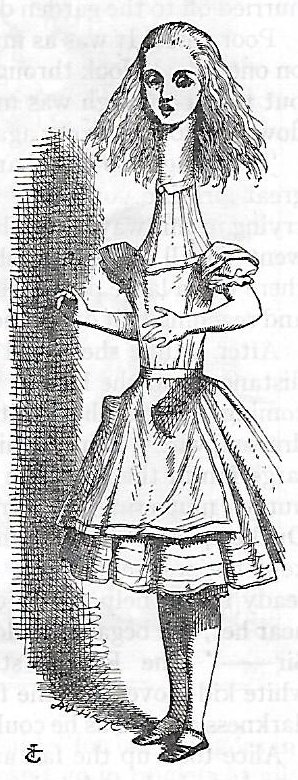
|

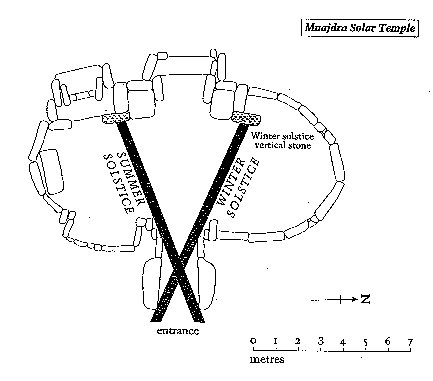






.jpg)

















